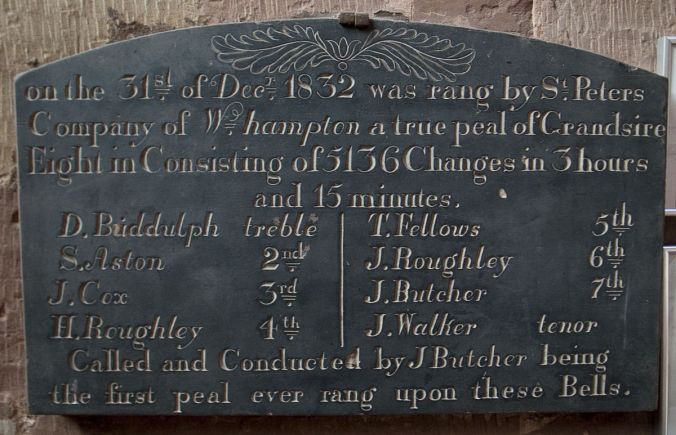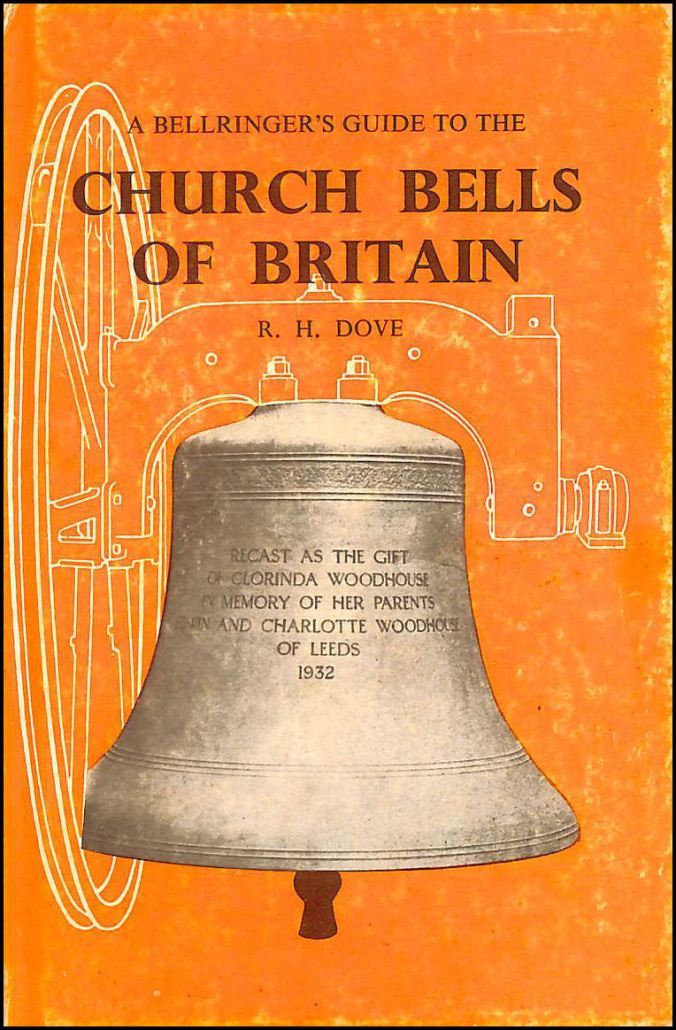13: Peals, quarter peals and Dove’s Guide.
At 5040 rows, the extent of Triples is a reasonable challenge, taking about 3 hours to ring and being equivalent in terms of effort to something like running a half-Marathon. Of course, the physical effort depends on the size and ease of the bells you are ringing. The mental effort needed varies enormously according to your level of experience and the difficulty of the method you are ringing.
Exactly 5040 changes rung on 7 or fewer bells is called a peal. To ring a peal on 6 bells or fewer, you’re going to need to repeat some changes. A peal of Minor is 7 extents (remember, 7 720 = 5040). A peal of Doubles needs 42 extents. To ring a different method for each extent in a peal of Doubles is quite a mental challenge.
On 8 bells and above, a peal is defined as 5000 or more changes.
A quarter peal is a nice length to ring for a service, on an outing, or for a special occasion. Quarter peals on 7 bells or fewer must contain at least 1260 rows, whereas, on 8 bells or more, you can get away with only 1250. Quarter peals take somewhere around 45 minutes to ring.
If you’re sharp with the maths, you’ll have noticed that a quarter peal of Minor doesn’t need two full extents (1440 rows). You only need 1260, so one 720 and a touch of at least 540 will do. A touch is a piece of ringing based on plain courses but using calls to get the right length. You’ll learn about the commonest calls – bobs and singles – when we look at how to ring an extent of Grandsire Doubles.
For a quarter peal of Doubles, you need 10 120s and a touch of 60 rows.
I’ve simplified these definitions a bit. These days, things are a bit more complicated and a bit more flexible, but I wouldn’t worry about that just yet. When you get round to ringing your first quarter, a big milestone in any ringer’s career, your conductor will know what to do.
Of course, it’s not compulsory to ring peals or quarter peals. Some ringers never ring any of either, and that’s fine. However, if you really want to progress as a ringer, then quarters and peals are going to be useful, and they can give you a fine sense of achievement. Special peals may be recorded on a peal board in the tower where it was rung. Just sometimes, you’ll find a pealboard in a tower which records a peal rung somewhere else. Either way, it’s always nice to walk into a tower and see your name on the wall!
Here’s an interesting and stylish pealboard from Penkridge in Staffordshire:

It’s nearly 200 years old, and etched upon slate. The method was Grandsire Eight (Grandsire Major). Grandsire on even numbers of bells was much more popular in those days than it is now. ‘Called and conducted by J Butcher’ is very curious expression, since ‘calling’ and ‘conducting’ mean pretty much the same thing! The eight bells at Penkridge were installed by John Taylor & Co in 1831. The ringers from the Collegiate church of St Peter in Wolverhampton clearly came down to Penkridge to show the locals how to ring them.
You can find out about towers and their bells by consulting Dove’s Guide online. The details of Penkridge bells are here:
Dove’s Guide: Penkridge, Staffs.
Ronald H Dove was tower captain at Leeds Parish Church for many years in the mid-twentieth century. It was he that first produced the guide to all the ringing towers in the world, and, though he’s no longer with us, it still bears his name. His son, Barrie Dove, still rings in Leeds and is currently President of the Yorkshire Association. I had the privilege of ringing with Ron Dove when I first moved to Leeds in 1976, though he had moved away from Leeds by then.
The bell on the front cover of the older printed versions of Dove is the tenor at Leeds Parish Church, now Leeds Minster. Weighing just over two tons, it was cast in 1932 by John Taylor & Co in Loughborough.




